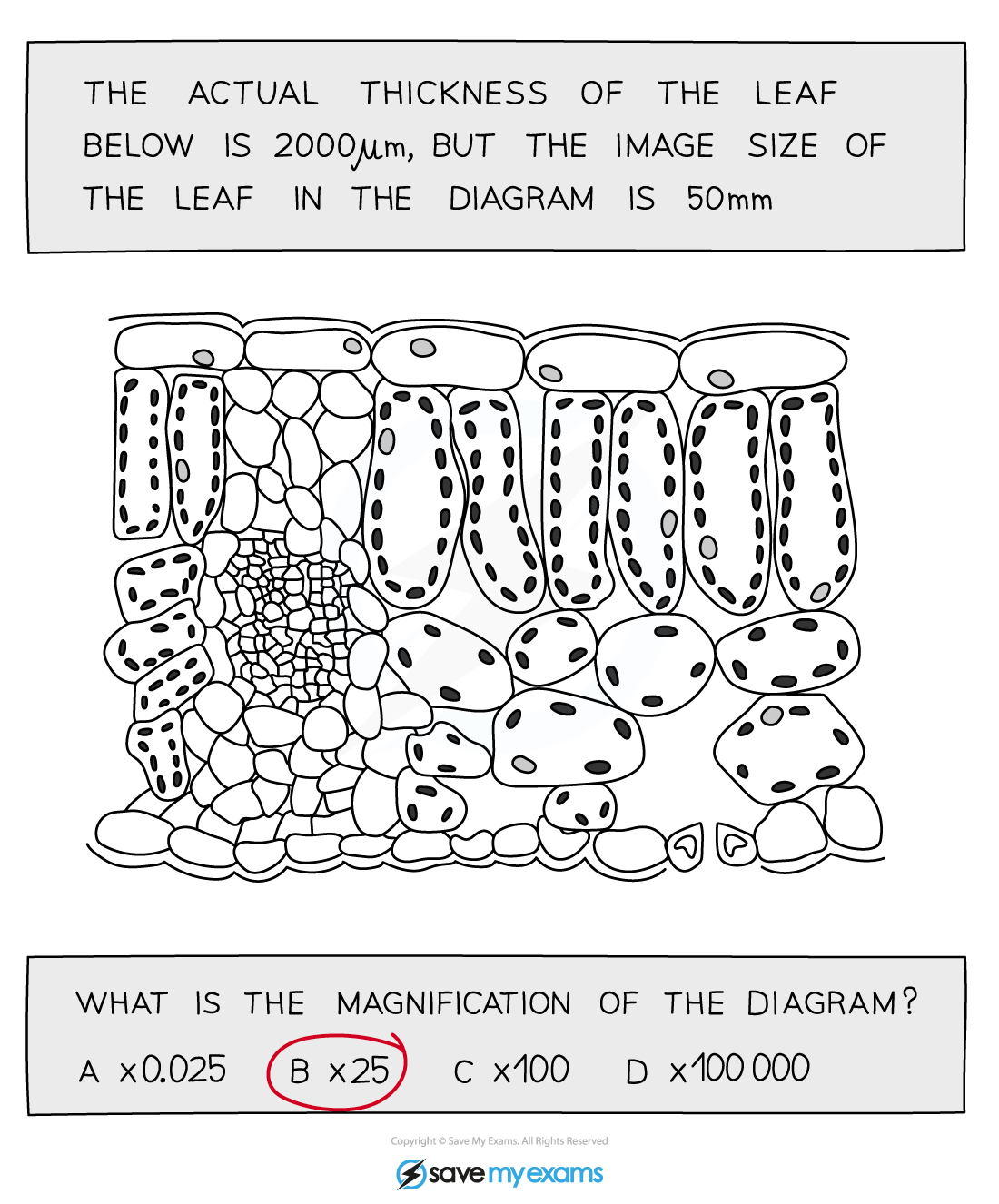Converting Between Units (Cambridge (CIE) IGCSE Co-ordinated Sciences (Double Award)): Revision Note
Exam code: 0654 & 0973
Converting Between Units: Extended
Extended Tier Only
The size of cellular structures is often given in micrometres (μm), while rulers are usually used to measure the size of objects in millimetres (mm)
The conversion between µm and mm is:
1 mm = 1000 µm
The discrepancy between cellular size and the measurements that can be gained using a ruler means that calculations will sometimes require conversion between μm and mm, or vice versa
Unit conversions table

Converting mm to μm diagram

Worked Example

Answer:
Step 1: convert the units so that they match
1 mm = 1000 µm
The actual thickness of the leaf is given as 2000 µm
To convert 2000 µm into mm we divide this number by 1000
2000 ÷ 1000 = 2
The actual thickness of the leaf in mm is 2 mm
Step 2: enter numbers into the magnification equation
magnification = image size ÷ actual size
50 ÷ 2 = 25
So the magnification is x25
Examiner Tips and Tricks
Unit conversion is the most common source of error in questions that include magnification calculations, so don't forget to do this, and make sure that you are confident converting µm into mm or mm into µm.

Unlock more, it's free!
Did this page help you?